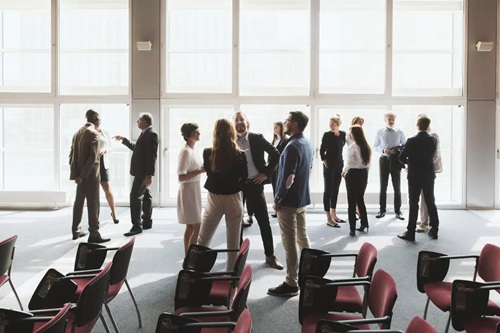There are hardly any other areas where students can study the action and reaction of human beings, trends and groups like in social experiments. Carrying out these experiments, students will be able to illustrate the findings of tutors, develop critical thinking and improve knowledge about the sphere of social psychology and other connected disciplines. Included in this article are some ideas of some fun social experiments that students can conduct, in addition to giving some tips on how to safely do it.
Why Social Experiments are Significant for Students?

Social experiments allow students to:
Explore Human Behavior: The need to comprehend why and how individuals act in specific ways.
Challenge Norms: Look at pressure and various people’s behavior concerning society’s norms and values.
Foster Empathy: In understanding how they feel, especially the oppressed or minority people.
Develop Research Skills: Learn how to plan, conduct, and evaluate experiments as scientific projects.
General Social Experimenting for Students
1. The Bystander Effect
Objective: Find out how people react in emergencies where others are around.
How to Conduct:
Reminiscence: undress in a public place (for example, sitting area) and pretend someone dropped books or tripped.
Notice how many and how fast people help.
Learning Outcome: Illustrates the phenomenon of diffusion of responsibility in group situations.
2. Breaking Social Norms
Objective: Evaluate the responses of others to norm breaking.
How to Conduct:
Do such easily forgettable breaches such as standing with your back towards the door in a lift or wearing different shoes.
Record those levels of engagement that people bring to bear while participating in the study.
Learning Outcome: Stresses the role played by social expectations in moulding people.
3. The Halo Effect
Objective: What roles does look play in judgments?
How to Conduct:
Display pictorial images of people to participants and let them rate personality characteristics (for example, courtesy and smart).
Include people with different dressing code, or personal grooming in the photos used.
Learning Outcome: Backs decisions that are informed by looks.
4. Group Conformity
Objective: Learn about processes of social influence in particular focusing on compliance with the majority viewpoint.
How to Conduct:
Divide a group of people and tell them to choose the longest line on a chart and most of them are told to choose incorrectly.
It is necessary to know if the uninformed participant obeys the group’s decision even if the choice is wrong.
Learning Outcome: Illustrates how group influence affects.
5. Kindness Chain Reaction
Objective: Track how friendly behaviors affect people’s actions.
How to Conduct:
Do a silly thing like buying a cup of coffee and see if the other person will pay for the next cup.
Learning Outcome: Brings into focus how action with good intent spreads their impact widely.
6. Public Space Behavior
Objective: Examine the issue related to personal space.
How to Conduct:
Stay close to a person in a public place (for instance at a park walking around) when there are many places to sit.
Record their reactions.
Learning Outcome: Can be used to capture and demonstrate personalities or rules of interpersonal space.
7. Implicit Bias Awareness
Objective: Identify actual and potential prejudice with past impressions.
How to Conduct:
Instead, for each case, describe some people of different race, gender, or age.
Tell them to say something that they probably assume about every person.
Learning Outcome: Contributes to the understanding of inconsiderate prejudices.
8. Gratitude Experiment
Objective: Exploiting is a plethora of benefits that stem from expressing gratitude.
How to Conduct:
Each participant should write a thank you card to an individual that is special to them.
New developments in the children’s mood or the way that they relate to other people can also be indicative of abuse.
Learning Outcome: Illustrates the psychological advantages of gratitude.
9. Silent Treatment
Objective: Explain how communication is used in collaboration.
How to Conduct:
Provide group activities where participants are not allowed to use their voice.
Assess the proactivity of their strategies for the execution of the task.
Learning Outcome: Introduces issues of communication in the context of tasks accomplished in a team.
10. Free Hugs Campaign
Objective: Researchers should explore people’s willingness to receive kindness from stranger.
How to Conduct:
Take a sign and give out free hugs within the premises of a popular area of town and notice the people’s response.
Learning Outcome: Exhibits more and less of ease about touching in public places and coming into contact with one another.
Ethics of Practicing Social Experiments
When designing social experiments, students must prioritize ethics:
Informed Consent: Unless otherwise, participants should be aware that they are participants in a study.
No Harm: Make sure that savaging the experiment is not going to create physical, emotional or psychological discomfort.
Anonymity: They also ensure that participants’ identity is protected.
Debriefing: After the experiment, explain its purpose to the participants.
FAQs
1. What is a social experiment?
A social experiment is a type of experiment which is carried out to determine behaviour of people in given social settings or their reaction towards certain changes in their physical environment.
2. Are social experiments only to be conducted by and performed on psychology students?
Well, social experiments can be useful too for students who are studying sociology, education, business, and even fine arts as they teach about interconnection.
3. How can students guarantee that their experiment is ethical?
Students are required to obtain consent, do no harm, keep participants anonymous and to debrief participants to achieve this goal in line with ethical standards.
4. What behaviours can learners attend from social experiments?
They learn research skills, learn critical reasoning, learn data analysis methods, and human behavior.
5. Is it possible to carry out social experiments in school?
Yes, there are lots of experiments appropriate for schools provided these experiments are ethical and should be the teachers of them.
A gentle activity that is suitable for pupils is the Kindness Chain Reaction in which students pay kindness forward and study the impacts.